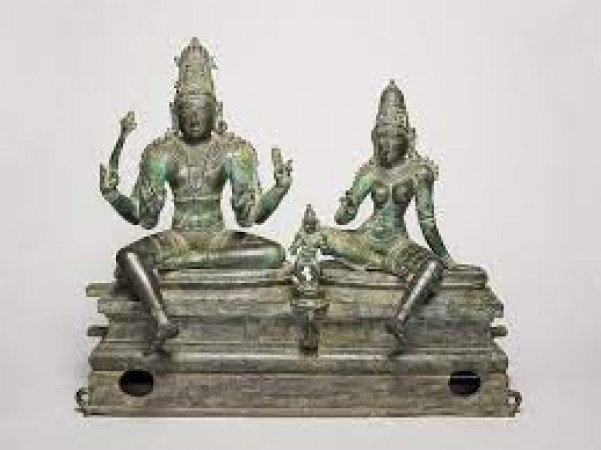
In the intricate mosaic of Hindu deities, Somaskanda stands as a captivating and deeply meaningful figure. This demigod embodies the essence of familial harmony, unity, and devotion. Rooted in ancient texts and artistic expressions, Somaskanda's depiction as a divine family serves as a beacon of spiritual significance and cultural resonance. This article explores the origins, symbolism, and cultural impact of Somaskanda, shedding light on its role within Hindu mythology. Somaskanda's origins can be traced to the rich canvas of Hinduism, particularly within the Shaiva and Shakta traditions. The term "Somaskanda" translates to "Soma" (moon), "Skanda" (Lord Kartikeya), and "Parvati," collectively symbolizing a harmonious family unit. The concept of Somaskanda gradually took form and found prominence in ancient texts like the "Puranas" and "Agamas."
At the heart of Somaskanda's portrayal is the divine family itself. Lord Shiva, depicted with Parvati and their son Kartikeya, encapsulates the sanctity of familial bonds and the dynamics of parenthood. Shiva, the ascetic and cosmic lord, takes on the role of a nurturing father, while Parvati, the goddess of fertility and love, embodies the motherly care. Kartikeya, as the son, represents youthful wisdom and devotion. Somaskanda's imagery exudes an aura of unity and devotion. The family unit embodies the spirit of togetherness, emphasizing the importance of familial ties in the journey of spiritual awakening. The divine parents' tender embrace of Kartikeya symbolizes the nurturing of spiritual growth within the protective embrace of a harmonious family. Somaskanda's influence extends beyond theological contexts, leaving an indelible mark on art, architecture, and cultural practices. Temples across India, especially in South India, feature intricate depictions of Somaskanda, serving as visual reminders of the ideals of family unity and devotion. These depictions inspire pilgrims and devotees to seek similar harmony within their own lives.
The symbolism of Somaskanda delves into profound spiritual reflections. It portrays the interconnectedness of divine forces and the underlying unity that binds the cosmos. The family's portrayal emphasizes the synthesis of male and female energies, embodying the balance inherent in creation.In the modern world, Somaskanda's depiction continues to resonate with individuals seeking a deeper understanding of family values and spirituality. As societies navigate changing dynamics, Somaskanda offers a timeless model of familial harmony and devotion. The divine family's portrayal serves as a source of inspiration for those striving to find balance between material and spiritual pursuits.
Somaskanda, the demigod of harmonious divine family, stands as a testament to the intricate interplay of love, unity, and spirituality within Hindu mythology. The depiction of Lord Shiva, Parvati, and Kartikeya embodies the sanctity of familial bonds and the nurturing essence of parenthood. As devotees and admirers engage with Somaskanda's symbolism, they are invited to reflect on the enduring values of unity, devotion, and balance within the tapestry of life. Just as the divine family stands together in harmonious embrace, Somaskanda beckons humanity to find unity and devotion within the interconnectedness of existence.
Also read -Ipoh: A Blend of Heritage, Nature, and Culinary Delights